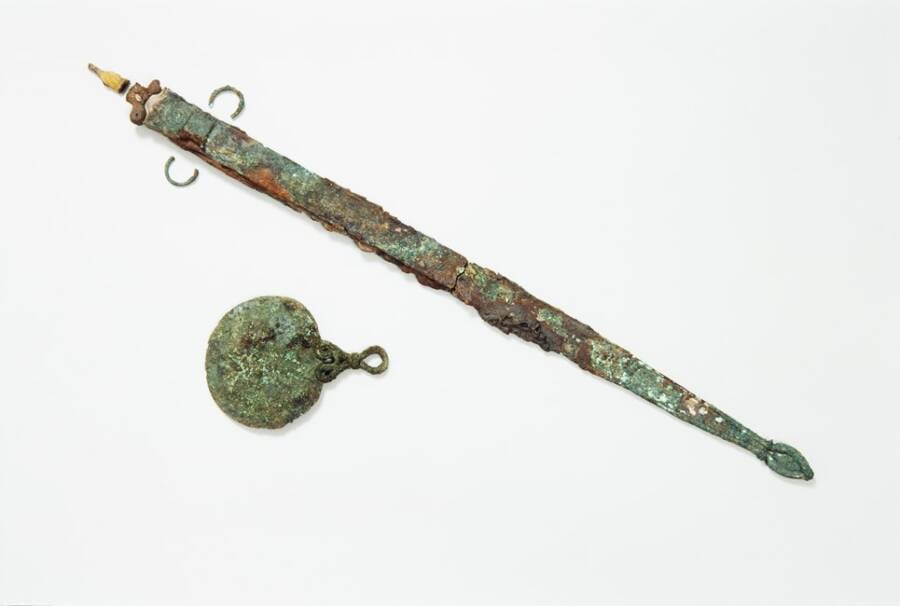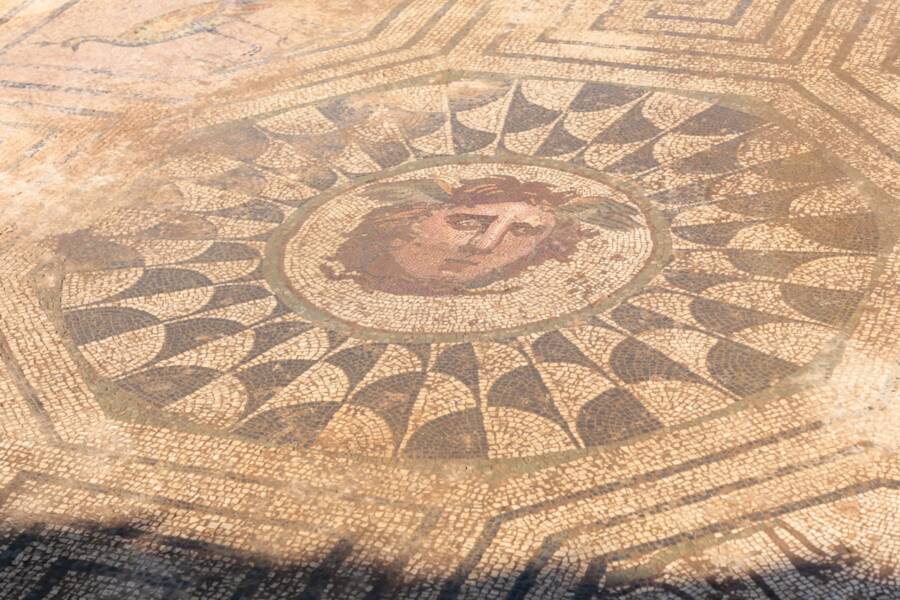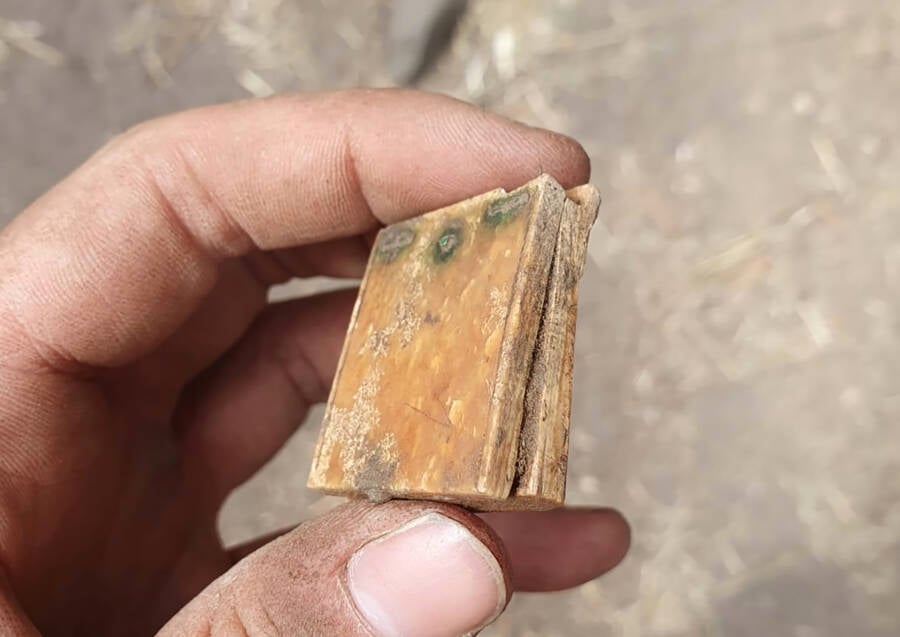Iron Age warrior woman identified in England, ancient Medusa mosaic uncovered in Spain, medieval sundial found in Germany.
Archaeologists Just Identified An Iron Age Warrior Buried On England’s Isles Of Scilly As A Woman

Historic England ArchiveAlongside the sword and mirror, archaeologists uncovered further instruments of both beauty and bloodshed, including a brooch, a ring, and a shield.
Researchers in England just identified the remains of an Iron Age warrior woman found buried on the Isles of Scilly. Ever since a potato farmer first stumbled across this gravesite more than 20 years ago, experts had been baffled because the burial contained both weapons as well as jewelry and a mirror.
Because the grave contained tools of both beauty and bloodshed, researchers were mystified, but DNA from her tooth enamel has finally solved this long-standing mystery. Furthermore, experts now believe that the mirror may have actually been used in battle as a way to reflect light to signal the start of an attack.
See more from this rare discovery here.
‘Exceptional’ Mosaic Of Medusa Discovered Inside Grand Roman-Era House In Spain

Mérida City HallThe mosaic’s coloring suggests that it was made during the second century C.E.
While excavating the Huerta de Otero site in Mérida, Spain, archaeological students made a stunning discovery: an ancient Roman mosaic depicting the mythological gorgon Medusa.
The 323-square-foot mosaic dating back at least 1,800 years includes motifs like fish and peacocks, as well as the fearsome head of Medusa herself.
Dig deeper in this report.
‘Sensational Find’: Medieval Handheld Sundial Discovered During Excavations In Germany

Felix TeichnerThis small sundial is only about the size of a matchbook.
While excavating the site of a church in Marburg, Germany, students at the University of Marburg made an exciting find: a medieval sundial small enough to hold in the palm of your hand.
The sundial, which is made of bronze and wood, likely dates from the 16th century. It’s the size of a matchbook, which means that someone could have kept it in their pocket. There’s a hole inside that would have fit a stick, which would have once shown the sun’s shadow.
Read on here.





